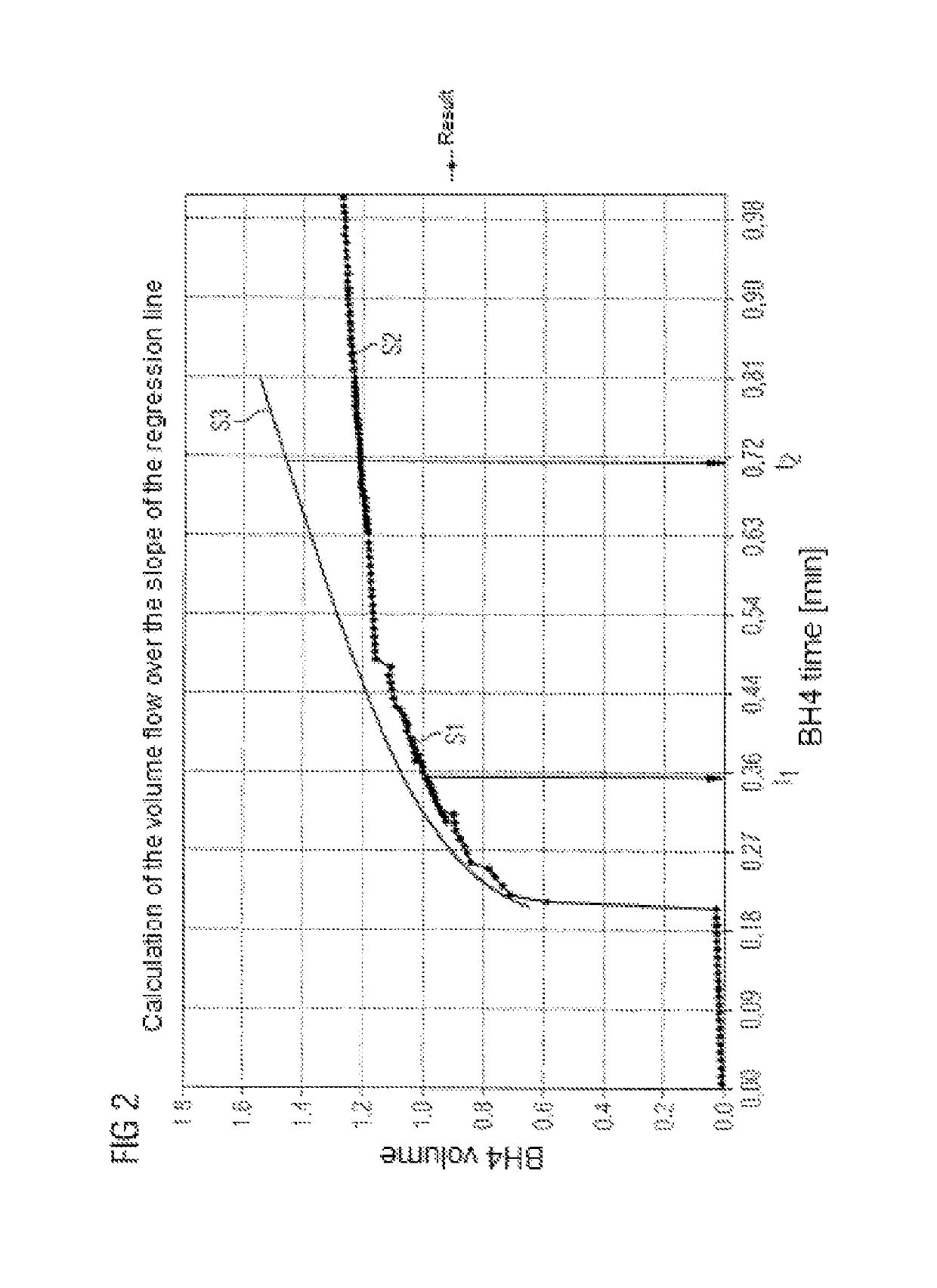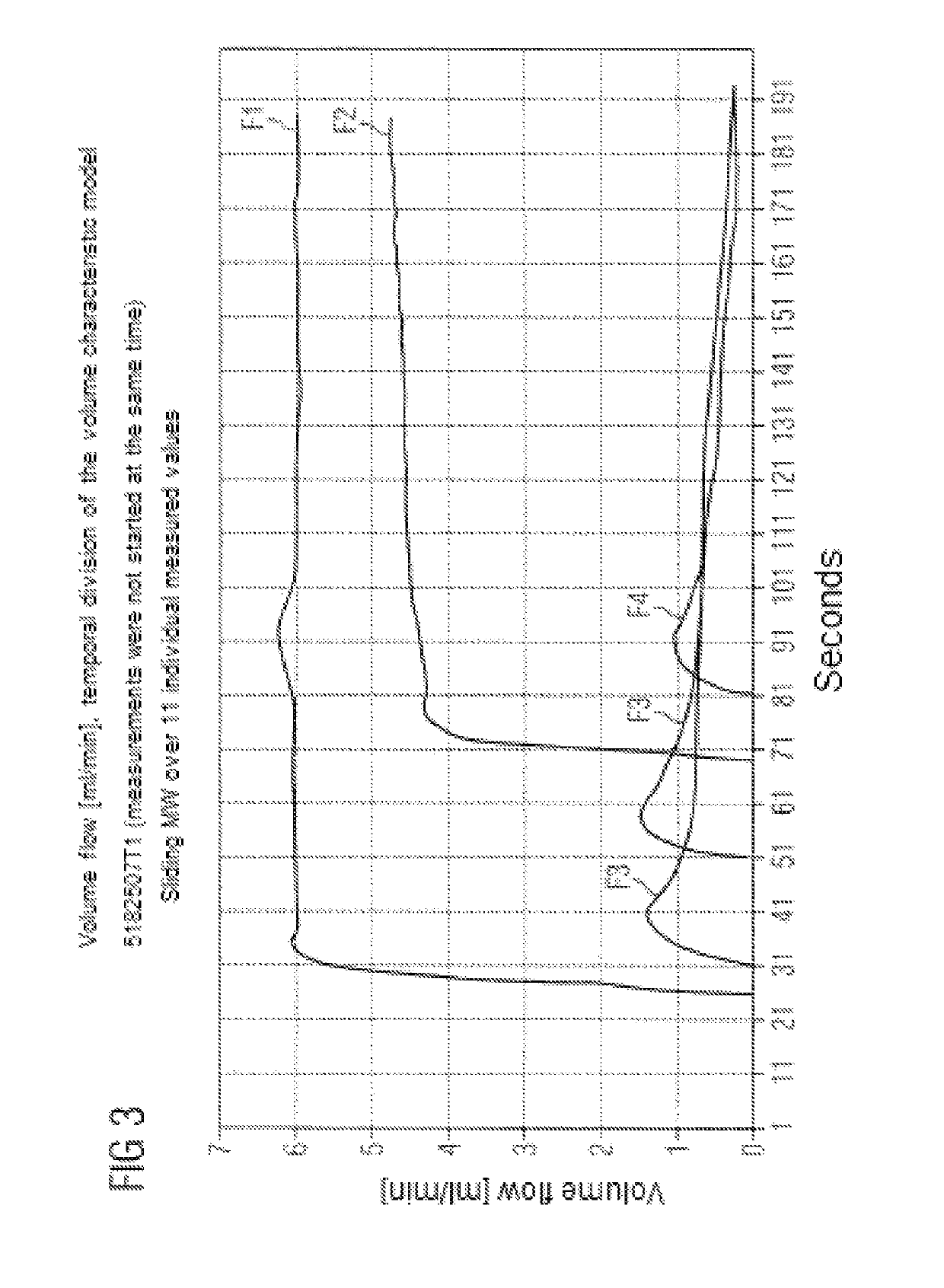Method and device for carrying out an integrity test on a filter element
a filter element and integrity test technology, applied in the direction of liquid/fluent solid measurement, volume metering, instruments, etc., can solve the problems of filter element wetting with alcohol, method temperature dependent, and lasting approximately 8 hours
- Summary
- Abstract
- Description
- Claims
- Application Information
AI Technical Summary
Benefits of technology
Problems solved by technology
Method used
Image
Examples
Embodiment Construction
[0078]FIG. 1 shows a schematic representation of a device 16 for carrying out an integrity test on a filter element. The integrity of a filter element F arranged in a vessel 1 is checked by the device.
[0079]The device 16 is connected to a fluid inflow 11. The fluid inflow 11 is adjustable by means of a fluid inlet valve V1.1. A fluid can be introduced into a fluid conduit 5 via the fluid inflow 11. In this case RO water is preferably used as the fluid.
[0080]The fluid conduit 5 is connected to a pressure measurement cell (DMZ) 4 as a special configuration of a fluid feed. Furthermore, the fluid conduit 5 can be connected by means of a vessel valve V1.2 to the vessel 1.
[0081]The pressure measurement cell 4 can be connected to an evaluation means, which may for example be in the form of a PC. The pressure measurement cell 4 can be controlled by means of the evaluation means, in particular a pressure measurement cell controller 9 (as a special configuration of a fluid feed controller or...
PUM
| Property | Measurement | Unit |
|---|---|---|
| volume | aaaaa | aaaaa |
| pressure | aaaaa | aaaaa |
| internal volume | aaaaa | aaaaa |
Abstract
Description
Claims
Application Information
 Login to View More
Login to View More - R&D
- Intellectual Property
- Life Sciences
- Materials
- Tech Scout
- Unparalleled Data Quality
- Higher Quality Content
- 60% Fewer Hallucinations
Browse by: Latest US Patents, China's latest patents, Technical Efficacy Thesaurus, Application Domain, Technology Topic, Popular Technical Reports.
© 2025 PatSnap. All rights reserved.Legal|Privacy policy|Modern Slavery Act Transparency Statement|Sitemap|About US| Contact US: help@patsnap.com



